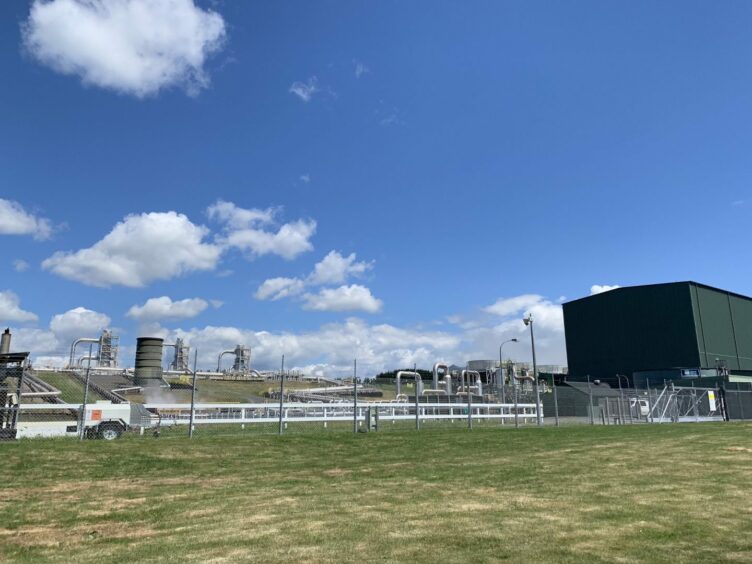
The energy crisis is deepening. There is little doubt that most economies around the world are facing a serious situation and, with recent reports suggesting one in four people in the UK will not switch their heating on this winter, that’s a chilling prospect for our population, particularly the elderly and vulnerable.
The world needs inexpensive energy sources that contribute to global energy security while also tackling carbon emissions and climate change. The much-debated Energy Trilemma refers to the ongoing battle of finding a balance between energy security, affordability, and sustainability.
So, let’s talk geothermal and the role it can play in the future energy mix. It’s about uncovering the untapped and largely forgotten potential of the energy source that is, literally, the heat beneath our feet.
Overlooked and ignored by the vast funding and focus bestowed on wind and solar over the years, geothermal has so much more to offer and it’s time for a concerted effort to accelerate growth of domestic renewable and sustainable energy sources.
Renewable energy will undoubtedly play a significant role in meeting future energy demands, but there is no ‘one silver bullet’ here. Our future energy mix will be a diverse mix of renewables, as well as oil and gas, for the foreseeable future. Geothermal has the potential to help replace natural gas, reducing reliance on imported energy, and provide a clean, renewable ‘always on’ source of energy.
Advantages of geothermal energy
Geothermal is intriguing because of its adaptability, as it enables both direct usage and the production of electricity. As well as heating and cooling our homes and places of business, it can be utilised to produce heat in greenhouses in agriculture and food production.
Minerals extracted from geothermal aquifers are frequently abundant in lithium, which is used in the manufacture of batteries. Geothermal energy can also be used in conjunction with electrolysis techniques to create green hydrogen. And in places with high enough temperatures, it can also produce power.
It also fulfils several of the criteria for the Energy Trilemma. Like solar and wind, it offers a low-carbon kind of energy, but is unaffected by their unpredictability problems.
The only renewable, sustainable energy source that delivers baseload power 365 days a year, no matter the weather, is geothermal energy. It is dependable and readily dispatchable.
The geothermal market is expanding quickly; by 2030, it is expected that both geothermal direct consumption and global power generation will have increased by a factor of three and five respectively. Still, many nations have been unable to realise geothermal’s enormous potential because of its high initial cost, upfront risk, and long development times.
Governmental support comes in the form of taxes and incentives from the nations that have successfully integrated geothermal into their energy mix. Iceland and Turkey are two examples of this in Europe.
Technology will be a key enabler
Technological innovation was, and will continue to be, the driving force for a decarbonized civilisation. It’s fascinating to see how far geothermal technology has come in the last few years, with a range of cutting-edge methods currently being used to access and extract heat.
Enhanced Geothermal Systems (EGS) generate geothermal electricity without the need for a natural convective hydrothermal resource. This involves drilling deeper into hard hot rock and pumping at rates capable of creating natural fissures in the formation to create the permeability needed to allow fluid to flow.
New technologies, such as closed loop systems, which circulate fluids through sealed pipelines and boreholes to gather up heat by conduction and bring it to the surface where it may be used for heat and electricity, are included in advanced geothermal systems (AGS).
This is a significant moment in geothermal technology development and, to make geothermal energy globally scalable, the sector needs to see an increase in unconventional techniques such as EGS and AGS.
Additionally, the concept of utilising old oil and gas wells to generate geothermal energy has also recently been proven. This provides oil and gas operators with the ability to turn depleted wells into useful energy-generating assets. Re-purposing at its best.
Transferable expertise and technology
The geothermal industry offers opportunities familiar to companies working in conventional oil and gas by utilising transferable skills and engineering problem-solving capabilities to help drive the transition.
This is a great time to pivot into this space as new exploitation and surface turbine technology improve the viability of geothermal projects and provide the scalability needed for geothermal to be accessed more or less anywhere in the world.
Expro a world leader in the geothermal energy sector
Since 1986, Expro has offered exclusive services to the geothermal sector. Our track record includes well intervention operations in low-enthalpy parts of Europe as well as the Netherlands, as well as high-enthalpy locations like New Zealand, the Western United States, Asia, and Iceland.
In Expro, we believe our industry can support geothermal growth in a number of ways. We have the necessary expertise, knowledge, and technology. We have a track record of increasing productivity, lowering expenses, minimising risk, overcoming challenges, and solving issues safely and with integrity.
Within Expro, our wells expertise and portfolio offering are readily transferable to the geothermal sector, allowing us to grow from our already established foothold, and provide a low-carbon line of business adjacent to our oil and gas portfolio.
Expanding partnerships, breaking down barriers, and working across sectors are all necessary to support the expansion of geothermal energy, for the sake of our industries and to help contribute to brighter future for our planet. The future of geothermal is now.
Recommended for you
